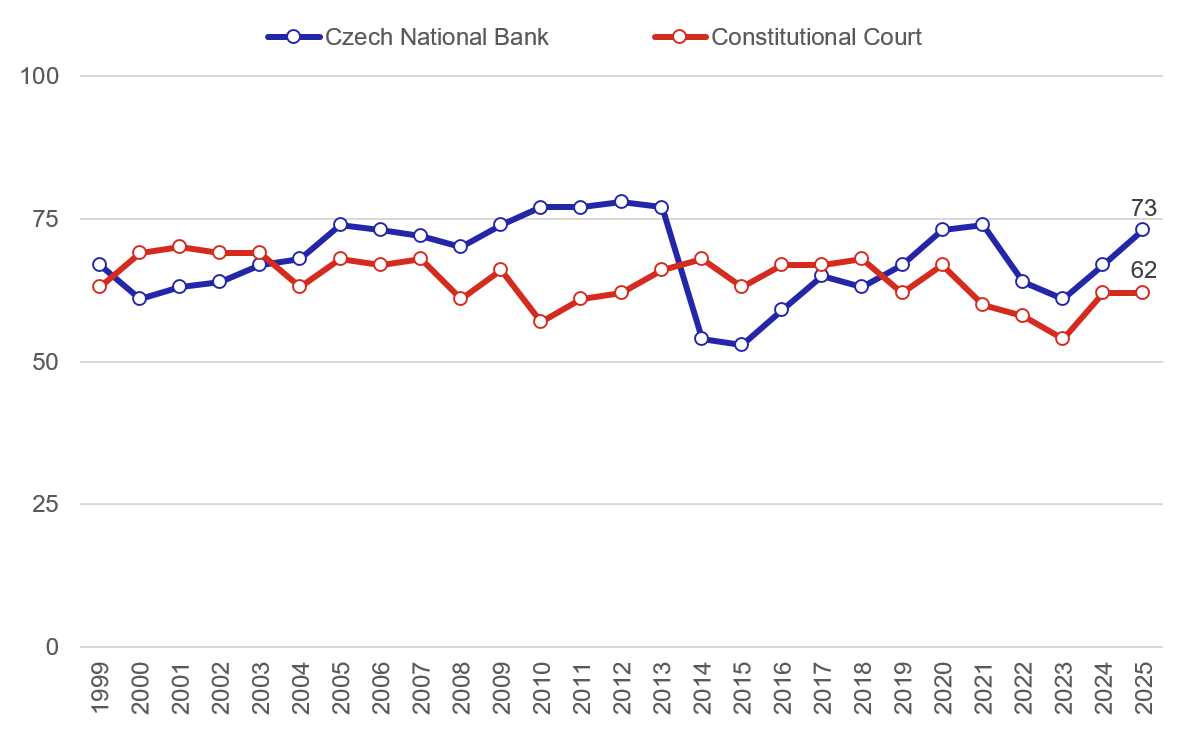Czechs Now Trust the Central Bank the Most
According to the latest survey by the STEM agency, nearly three-quarters of the population (73%) trust the Czech National Bank. This places the central bank at the top of the public institutions trust ranking. It is also one of the highest levels of trust ever recorded by STEM in its long-term monitoring of public confidence in domestic institutions.
The CNB’s primary mandate is to maintain price stability — that is, to keep inflation low and stable, close to the 2% target. After the period of elevated price growth in 2022 and 2023, this goal is once again being met. As early as the beginning of 2024, the CNB succeeded in restoring price stability in the country. Over the whole year 2024, consumer prices rose by an average of just 2.4% year-on-year — the lowest rate since 2018. In April 2025, according to the latest data from the Czech Statistical Office, the annual inflation rate stood at 1.8%, the lowest in the past seven years.
The restoration of price stability is one of the key reasons for the current high level of public trust in the CNB. “This result likely also reflects the stabilizing economic situation and the gradual easing of inflation,” confirms STEM analyst Doris Borovcová. According to the CNB’s forecast, inflation will remain close to the target not only throughout this year, but also in 2026.
In its report, STEM also noted that the CNB is perceived by the public as highly independent. “The low degree of political polarization suggests that the CNB is seen as a politically neutral institution,” said STEM analyst Doris Borovcová.
STEM’s time series shows that public trust in the CNB has remained high over the long term. Even during the period of heightened inflation, the energy crisis, and public concerns about future developments triggered by Russia’s invasion of Ukraine, 60% of the population trusted the central bank. Following the return to price stability and overall economic stabilization, trust in the CNB rose again. At 73%, it is currently the highest among all monitored public institutions. It is followed by municipal offices, the police, the army, regional authorities, and the Constitutional Court. In contrast, institutions associated with political power have consistently shown low levels of public trust.

Data source: STEM Trendy 1999-2025
Petra Vlčková
CNB Spokesperson